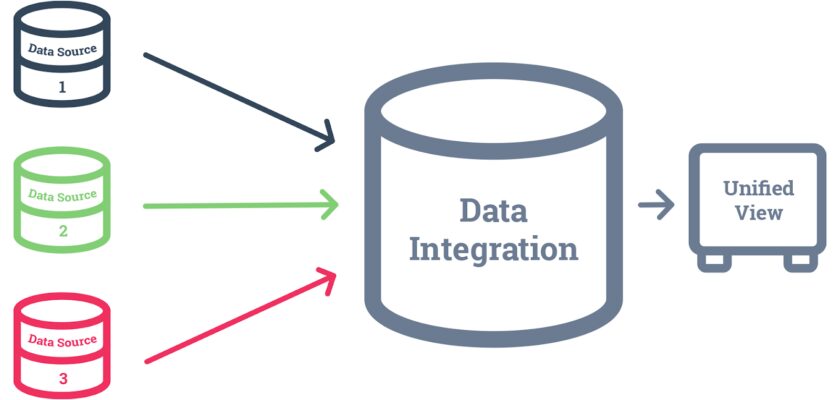Integrating data into business processes is no small feat, but it is central to a business’s optimal performance in the digital age.
Data integration is literally the process by which to compete against other businesses. Without data integration, your business is a dinosaur, so it is important to consider the benefits of data integration and what data integration actually is. The purpose of data integration is to remove data from siloed views and place that data in a context that shows the relationships among raw data points. It is similar to a dashboard.
Data integration is the process of moving data from both external and internal sources to another system. A “database” can mean anything from genuine warehouses to third-party tools for manipulating and viewing data. The main focus of the data consolidation process is to shove all relevant information into a central view that is easy for data teams to examine and query.
Originally, the latest data integration technologies were developed in order to address the phenomenon of the relational database. Essentially, relational databases require lots of manual input on behalf of data teams. This is time-consuming, and simple automation is inherently preferable to other data processes. Finally, all data integration products are governed by the capabilities of application programming interfaces, or APIs.
How Can One Achieve Data Integration?

Source: domo.com
Data integration consists of three subprocesses: propagation, consolidation, and federation. Propagation obtains data from one digital location and transfers it to another system, such as a data warehouse. This is the most fundamental way to transport information to a more appropriate digital environment.
Next is consolidation, the process of taking information from multiple sources and storing all that information inside one data warehouse. Federation is the most specific process. During federation, data is taken from many different sources, but once this data reaches its ultimate location, the data is not homogenized into something that is impossible to understand. Its identifying information stays preserved.
Set Business Goals
A key step in the data integration process is the initial effort to declare goals. Declaring the right goals sets up your data integration process for success. One goal might be to integrate more comprehensive customer data into your data stack in the interest of warmer leads and better marketing. Once you set any relevant goals and fill your data teams in on the details, then you can grant data access to any required teams. Building a strong software with which to perform data integration is a task fit for a strong IT team, though you may need to ask for help from marketing or sales teams to optimize the data integration process.
Take Good Care of Your Data

Source: medium.com
Data is sensitive. You and your data teams are responsible for the identifying information of your customers. One breach could make thousands of people victims of fraud or identity theft. Security and data are necessarily inseparable, so it is important to identify and maintain the integrity of every technology responsible for storing and updating data, especially when that data regards customers or companies.
Choose How You Want to Go About The Process
There are many different ways to go about data integration in general, and each business has its own challenges that may inform which method to employ. You may need to depend on several methods at the same time, depending on the size of your business and your industry. Many methods involve data consolidation, building custom software, and employing the right third-party software. Sometimes, a combination of these things is necessary. Your data team may be able to shed light on the type of data integration technique to employ in the competition against other businesses.
Popular Techniques

Source: freepik.com
One popular method for data integration is cloud-based integration. During this process, integration solutions consolidate data from multiple sources into one digital location, namely a “cloud,” a digital pool of data. You might also employ an open-source data integration software. This is a free software that allows for more expansive control over in-house data. Data integration tools are largely informed by popular industries and practices. Furthermore, you may be able to employ the enterprise data integration technique.
This technique is best for the biggest companies whose data collection modules have existed for many years. Enterprise tools are for major IT departments with lots of resources. Such IT departments should offer seasoned veterans who are genuinely capable of wrangling with enterprise data integration methods. Next up is API Data Integration, the process by which to leverage the power of APIs against multiple applications so that other applications can share data sources with each other. Data integration is by no means a simple process, but with a modicum of patience, you and your business should be able to thrive.

